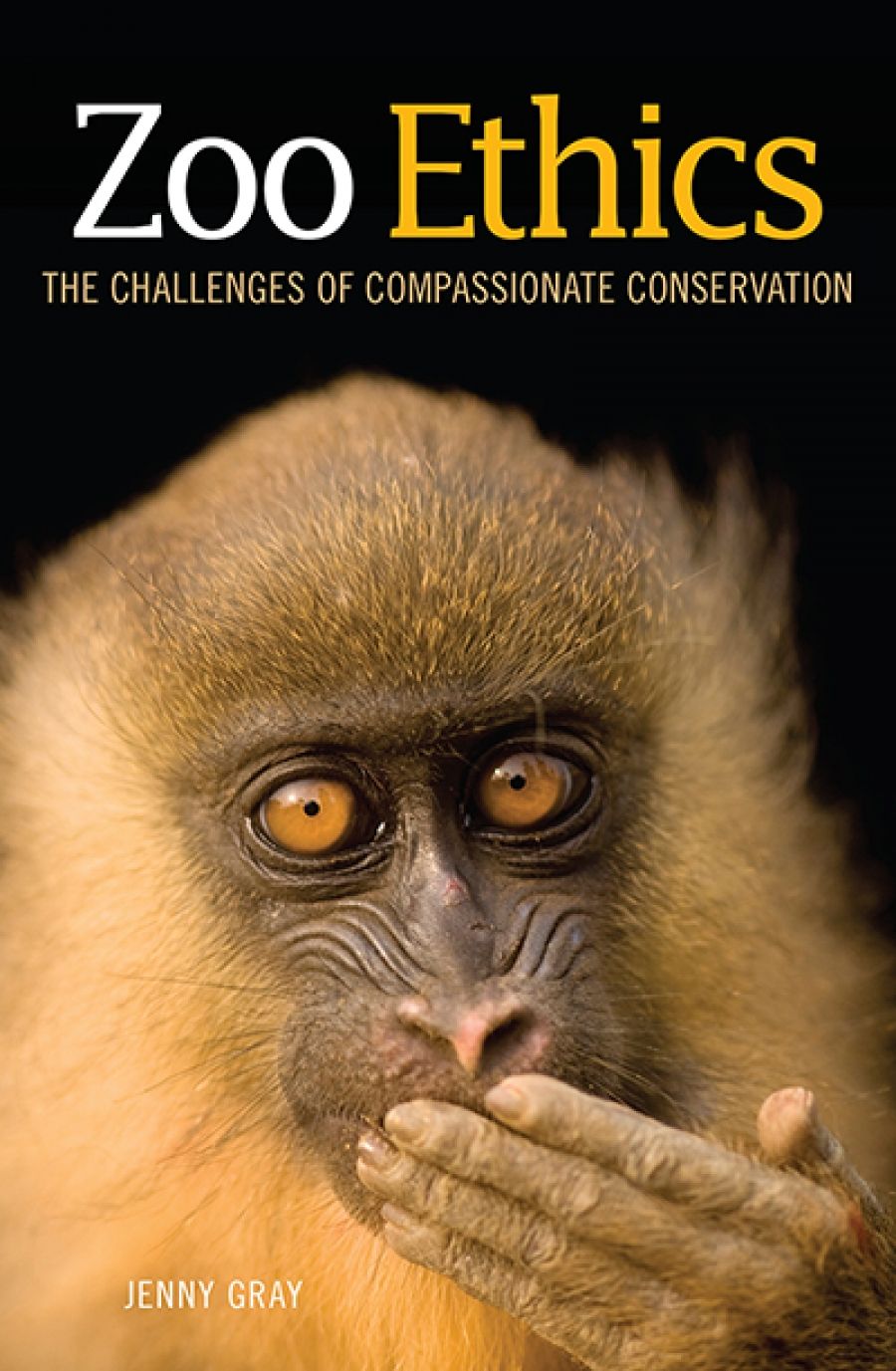
- Free Article: No
- Contents Category: Biology
- Custom Article Title: Matthew Chrulew reviews 'Zoo Ethics: The challenges of compassionate conservation' by Jenny Gray
- Review Article: Yes
- Online Only: No
- Book 1 Title: Zoo Ethics
- Book 1 Subtitle: The challenges of compassionate conservation
- Book 1 Biblio: CSIRO Publishing, $49.95 pb, 256 pp, 9781486306985
Gray also looks beyond the welfare and rights frameworks. In a strange chapter on consequentialism, she calculates the overall hours of positive experience visitors enjoy, a net benefit which vastly outnumbers the hours of negative experience the inmates might suffer a dubious exercise, particularly given how intensely the costs all fall on the latter group, as she later admits. A chapter on virtue theory explores the way exhibits reflect and instil values and virtues in both staff and visitors, particularly children, yet strays without reward from the relevant questions around compassion and biophilia, and fails to take advantage of the critical literature on such civilising institutional missions. A chapter on environmental ethics situates zoos as important agents in responding to the crises of habitat destruction and extinction, contributing funds and resources, public awareness campaigns and captive breeding programs that insure threatened populations. Gray draws on the emerging field of ‘compassionate conservation’ that challenges the sacrifice of individual animals’ lives for the sake of their species or ecosystem, though few in that field will see zoos as allies.
 A postcard of the Polar Bear enclosure at Bristol Zoo, 1900-10 (Paul Townsend, Flickr)
A postcard of the Polar Bear enclosure at Bristol Zoo, 1900-10 (Paul Townsend, Flickr)
Gray’s potentially most transformative argument is that only certain animals are actually suited to living in human care, and thus that zoos should undertake an honest inventory and admit their limitations when it comes to keeping complex, social, and wide-ranging species: ‘it is time for a rigorous debate within the zoo and aquarium community on what animals it is plausible to hold and breed in positive welfare states’. While she condemns the capture of wild marine mammals like dolphins, she defends the keeping of elephants, great apes, raptors, and many others, at least pending challenges based on further, apparently missing knowledge of their capacities. The bind, of course, is that it is precisely the large, intelligent, charismatic animals least suited to captivity that are zoos’ biggest drawcards. Such pragmatic imperatives of zoo business have long checked what ethics might demand.
Ultimately, the book’s intended challenge to the prevailing zoo agenda is hampered by its structure as much as by its compromise between transforming and defending the industry. Considerable space is devoted to summarising various frameworks and rehearsing old arguments without much synthesis. The main text is supplemented by a number of short case studies such as the shooting of the gorilla Harambe, into whose enclosure a child had fallen, at Cincinnati Zoo in 2016, or the ‘euthanasia’ killing of the healthy but ‘surplus’ juvenile giraffe Marius at Copenhagen Zoo in 2014. The reader is invited to apply their own (now augmented) ethical reasoning to these controversial issues. Yet this intended pedagogy seems only to shirk the task at hand. Centring these ‘wicked problems’ would have enabled a more thorough and upfront exploration of the conflicts and contradictions at the heart of zoo life and logic. As it is, the unfortunate impression at times is of ethics used to inoculate against criticism, to position ‘well-run, modern zoos’ as, at least, doing their best in a difficult grey zone where there are, in fact, no adequate theories or easy, final answers.
 Protest in Lisbon over the killing of the juvenile giraffe Marius at Copenhagen Zoo in 2014 (photograph by Mattia Luigi Nappi, Wikimedia Commons)
Protest in Lisbon over the killing of the juvenile giraffe Marius at Copenhagen Zoo in 2014 (photograph by Mattia Luigi Nappi, Wikimedia Commons)
This openness demands courage and creativity. Ethics is more than the rational discussion and weighing of principles and consequences a discourse that can obscure as much as it reveals. We might for example link the core issue of the virtue ethics Gray evokes, the formation of character, not only to the production of virtuous qualities in zoo workers and visitors, but to the character formation of zoo animals that is, the not insignificant ways in which they are formed and transformed by the apparatus of captivity that is their world. In this light, the relevant questions would expand beyond those about suffering ‘what have we done to them?’ to become, more keenly, ‘who have we made of them?’
This is the enigma confronting zoos today. Gray, to her credit, begins to address it via her forthright admission that zoo animals are not ‘wild’ that, despite efforts to frame them so within naturalistic exhibits, they are thoroughly transformed by captivity, by the protection from predation, hunger, and disease that zoos often claim makes them better off. The steady redemptive emphasis on conservation activities only obscures the stakes for those animals whose tameness and dependency make them unsuitable for reintroduction. The task facing those who, as Gray insists, have responsibility for every aspect of these vulnerable animals’ lives is not one of keeping or making them wild, nor simply of providing positive rather than negative experiences, but of expanding the possibilities of connection, of inventing new, better ways to be human and animal together.


Comments powered by CComment